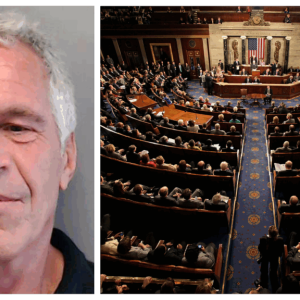After the narrator moved into his late father’s home the day after the funeral, he found the house preserved exactly as his father had left it: tools untouched, projects unfinished, and the soft, lived-in presence of a quiet man who had always kept to himself. While sorting through old belongings, he discovered a hidden photo album and expected to find family memories—vacations, birthdays, the small moments that build a childhood. Instead, he opened a collection of unsettling photographs of teenage girls he didn’t recognize. These girls appeared frightened or injured, some crying, some bruised, none smiling. The disturbing images contradicted everything he knew about his father, a reserved mechanic whose world seemed limited to work and family. Unable to make sense of the discovery, he was haunted by questions until he eventually dug deeper and uncovered a locked drawer containing letters and an envelope marked, “To be opened in case of emergency.”
Inside the envelope, his father explained that the girls were runaways, victims of abuse, or targets of dangerous men. He wrote that he had helped hide them, offering shelter and safety when they had nowhere else to go. The letter ended with a cryptic message urging the narrator to find a woman named Marie, someone he had never heard of. Determined to understand the truth, he visited the return address and met Marie, an older woman whose reaction to his father’s name made clear she had expected this moment. She invited him inside and revealed the truth: she and his father had run an unofficial safe house in the early 2000s, providing sanctuary for girls fleeing desperate situations. Traditional shelters had been overwhelmed and sometimes unsafe, so his father opened his garage and attic, taking in girls who needed immediate refuge.
Marie showed him more photos and newspaper clippings, explaining that the images had been taken for documentation in case any girl went missing—proof for authorities should something happen. She revealed that his father had saved twenty-eight girls over the years, many of whom had gone on to rebuild their lives with strength and purpose. Hearing this, the narrator’s memories suddenly aligned: the strange late-night phone calls, the locked areas of the house, his father’s mysterious requests for privacy. His father had been protecting people, not hiding crimes. This revelation sparked an emotional transformation as the truth reframed the man he thought he knew.
The narrator soon began meeting some of the women his father had helped. Marie provided names, phone numbers, and old email addresses, and the responses were immediate. Many of the women credited his father with saving their lives. One woman sent a photo of her family; another described how the garage bed had been the first safe place she’d slept in years. A woman named Lisa met him for coffee and shared that she now ran a shelter modeled after his father’s example. These interactions brought clarity and pride, revealing the depth of compassion, courage, and quiet heroism his father had embodied behind closed doors.
One day, a man named Ronnie visited the house. He explained that his sister had once been one of the girls his father rescued. Though she later passed away, she had told him about the kindness she experienced under Paul’s protection—the first time she had felt human again. Moved by gratitude, Ronnie donated $50,000 to help preserve the house as a place of refuge. The narrator and Marie worked together to transform the home into a public nonprofit shelter named “Paul’s Place.” Community support poured in: volunteers renovated rooms, artists painted murals, and local businesses contributed supplies. The home became a thriving sanctuary for young women in crisis, honoring his father’s legacy openly and legally.
The first young woman who arrived stayed for several months, earned her GED, and left a note that read: “Thank you for seeing me.” This note symbolized the continuation of his father’s mission—a mission built on dignity, safety, and understanding. A year after the funeral, they held a ceremony celebrating Paul’s impact. Former residents shared emotional stories, including a woman named Claudia who had once appeared in the album with a black eye. She was now a social worker dedicated to helping girls like she once was. Her testimony captured the essence of Paul’s quiet heroism, and applause filled the yard. At the ceremony’s end, the narrator reflected beneath the old maple tree where his father used to fix bikes, remembering words his father often said: “Do the right thing, even when nobody knows.” The photo album now sits in a case at the entrance of Paul’s Place, symbolizing survival, hope, and the profound legacy of a man who saved the world in small, quiet ways.





